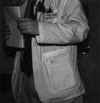The barriers to electronic medical record systems and how to overcome them
- PMID: 9147340
- PMCID: PMC61236
- DOI: 10.1136/jamia.1997.0040213
The barriers to electronic medical record systems and how to overcome them
Abstract
Institutions all want electronic medical record (EMR) systems. They want them to solve their record movement problems, to improve the quality and coherence of the care process, to automate guidelines and care pathways to assist clinical research, outcomes management, and process improvement. EMRs are very difficult to construct because the existing electronic data sources, e.g., laboratory systems, pharmacy systems, and physician dictation systems, reside on many isolated islands with differing structures, differing levels of granularity, and different code systems. To accelerate EMR deployment we need to focus on the interfaces instead of the EMR system. We have the interface solutions in the form of standards: IP, HL7/ASTM, DICOM, LOINC, SNOMED, and others developed by the medical informatics community. We just have to embrace them. One remaining problem is the efficient capture of physician information in a coded form. Research is still needed to solve this last problem.
Figures






References
-
- McDonald CJ, Overhage JM, Abernathy G, et al. The Regenstrief Medical Record System: cross-institutional usage, note writing, and MOSAIC/HTML. JAMIA. 1995; 19th SCAMC Proceedings:1029.
-
- Barnett GO. The application of computer-based medical record systems in ambulatory practice. N Engl J Med. 1984; 310: 1643-50. - PubMed
-
- Warner HR, Olmsted CH, Rutherford BD. HELP: A program for medical decision-making. Comput Biomed Res. 1972; 5: 65-74. - PubMed
-
- Martin D. The Care Decision Support System. New Directions at the Indianapolis VA Medical Center: A Technical and Philosophical Treatise. Springer-Verlag, 1997, in press.
-
- Whiting-O'Keefe QE, Whiting A, and Henke J. The STOR clinical information system, MD Comput. 1993; 5: 8-21. - PubMed
Publication types
MeSH terms
Grants and funding
LinkOut - more resources
Full Text Sources
Other Literature Sources

